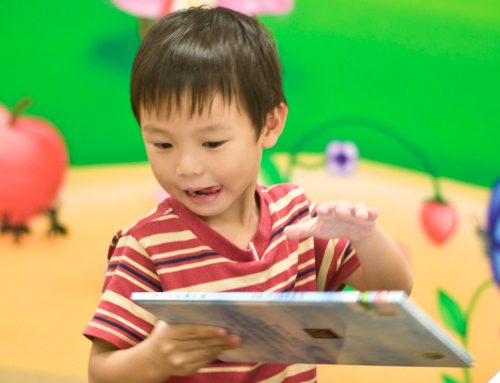A survey in 2016 shows that English is the most common home language in Singapore. If you’re like 36.9% of Singapore residents who uses English most often at home, it could be hard to teach your kids Chinese at your own accord. Besides, your crummy Chinese language skill isn’t helping.
Of course, it’s not entirely your fault. There are also various reasons why Singaporean kids struggle to learn Chinese; they may feel that it’s unnecessary, difficult, boring and such. Simply put, the odds are stacked against you teaching your kids Chinese at home.
With these much to consider, how do you get them to transit from speaking English to a mix of English & Chinese, and eventually mostly Chinese?
Establishing a language learning environment is one of the major factors that influence language learning, and if done right, the kid will willingly and naturally master the language without feeling forced.
Quick look at how to teach your kid Chinese if yours is bad
4 EFFECTIVE STEPS THAT ENCOURAGE CHINESE LEARNING AT HOME
1. Label items at home in Chinese
Your kids would need exposure to Chinese characters outside of books (eg, in our regular environment).
Oh no, does that mean I have to take time off just to bring my kids out to learn?
Well, we understand that parents are time-tight. We suggest starting from home. Your house is filled with furniture and appliances that could easily be learning materials!
Connecting these items with their respective Chinese characters creates associations. Kids are natural learners, and they need to absorb information through multiple senses.
Sometimes as you read the labels out loud to your kids, tap your finger on the Chinese character for emphasis. But try not to interrupt their focus on the item even if you wish to have them look and learn at the Chinese character.
Diverting attention from illustrations to text can take the fun out of learning and frustrates them, which would cause them to refuse the learning process altogether.
Some people label the whole house, but that can be too much to take. A better way would be to divide into sections, such as condiments in the kitchen, furniture in the living room, or toys around the house.
Take note of what the kids are interested in. For example, tagging stuffed toys may be useful since the items are already in their area of interest. Switch areas to tag once every week or so, otherwise, their little minds may begin to ignore it if it’s not interesting or new.
2. Set a Chinese-only hour at home
The best kind of learning settings would be soaking yourself in the language as much as possible, ideally reciprocated communication between parties.
In the past, teachers in school would ask students to speak strictly Chinese during Chinese lessons. And we certainly encourage that. You can start by designating a daily ‘Chinese-only’ hour, even if it’s only half an hour or less.
During this period, have casual conversations! Focus less on treating it as a teacher/student session, but more on observing and listening. The tremendous effect of listening will take place eventually, with you being able to know what they like and what you can do to take it up the next level.
Your conversations within that designated time can consist of those you’d usually use in English, such as:
- “你想要现在或是5分钟过后把玩具收起来呢?” “Will you put your toys away now or in 5 minutes?”
- “你想要先刷牙再洗澡,还是洗澡以后刷牙呢?” “Which do you want to do first: shower and then brush your teeth OR brush your teeth and then shower?”
- “你认为我们可以碰电源插座吗?可以或不可以?” “Should we touch the electrical outlet – yes or no?”
- “你觉得我们把书摆回书橱是个好主意吗?” “Is it a good idea if we put the books back neatly on the bookshelf?”
Also, it’d be good for parents to take note of the following to make those Chinese-speaking hours worthwhile:
Focus on:
- Adult vocabulary and not “kid talk”
- Words to use in daily conversation (food, toys, nature, etc.)
- Topics that your kid will be interested in
- Characters in books that your child likes
3. Learn Chinese songs and lyrics
Songs? But those are such huge chunks of words!
Don’t be afraid! Initially, they may seem a lot, but science says that it’s easier for the human brain to remember words that are linked to the pattern of sounds.
Songs are rhythmic, naturally, we’d want to be able to read the lyrics that made up the songs. And some songs have lyrics that are so good for learning, for example, Jay Chou’s were being included in textbooks for teaching Chinese.
Kids are prone to develop positive and negative associations with every experience, even if there was no explicit teaching intent. That gives song-learning a greater advantage since they can learn without feeling as though its a humdrum routine work.
If it’s too hard for them (or you), break the song into sections and illustrate the lyrics. As mentioned earlier, kids learn best when words are associated with visuals. Your child will have a better chance at mastering words in the lyrics because they’ll be more curious and will build confidence for learning more new words.
If you have older children, look for music that suits their preference!
4. Challenge each other
Encourage your child to take on challenges with a weekly ‘mock exam’. But keep the exam format as casual and fun as possible; you don’t want to terrorize your child with ‘real’ exams. Simple and challenging tests in the format of a game like “find the missing stroke activity” or “word solitaire game” is effective and fun!
Kids love challenges. And having some routine attached to it is great for nurturing your kid’s competitive streak. As time goes by, you can take the approach of calculating results for these tests and reward the winner!
Conclusion
As with anything, the first couple of steps are the hardest. Both you and your child are getting used to the language during this period. To avoid any chances of them resisting or overwhelmed, start with a few minutes per day.
One thing to note: you’d have to let your child associate the language with the person who will be speaking it. For instance, you or your partner could be the one doing these exercises and speaking the language as consistently as possible with the child.
Learning Chinese is challenging, especially when your own Chinese isn’t that great. But what we can do is to set a positive example, cheer them on when they make mistakes and have fun learning together!
If your kid is not yet in primary school and you’d like to establish a good Chinese foundation for them, join our 6-weeks P1 Prep Course and learn Hanyu Pinyin and vocabulary with story-telling, rhymes, and more! Plus, all lessons are held online, so no traveling needed: Sign up for our annual P1 prep course!










